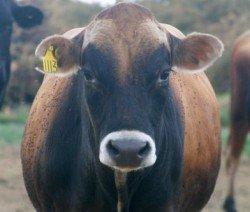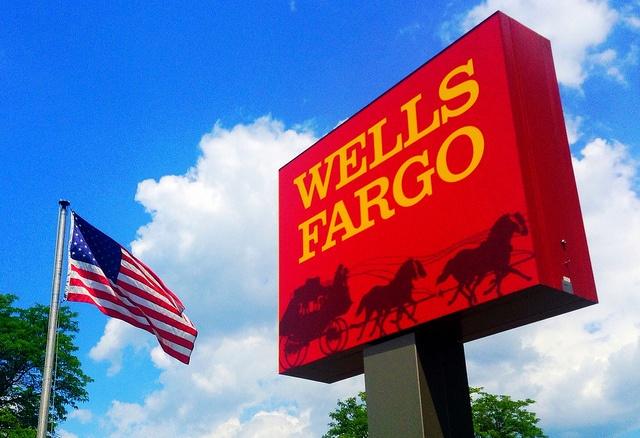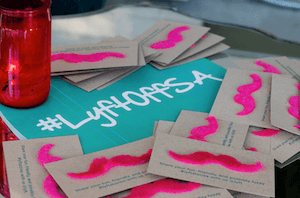Is Too Much Bottled Water Coming from Drought Stricken Regions?


The bottled water industry has grown exponentially the past few decades despite the fact tap water in the United States is generally safe. Never mind the fact bottled water producers have had more than their fair share of safety issues: Bottled water has become accepted by consumers. While companies such as Nestlé insist they are taking responsibility for water stewardship and recycling, they also bottle their water at dubious sources, including those in drought stricken regions.
In fact, much of the bottled water produced in the U.S. comes from areas affected by drought. As an article recently posted on Mother Jones illustrates, four of the most popular bottled water brands — Aquafina, Dasani, Arrowhead and Crystal Geyser — come largely from California. True, farming takes up the lion’s share of water in the state, and bottled water in the grand scheme of things is not parching California on its own. But at a time when California is struggling to provide residents, industry and farmers adequate supplies of water, more citizens are asking why it is bottled here and shipped out of state.
Part of the problem is regulation, or lack of it. While most states monitor and restrict groundwater use to ensure supplies are not depleted, California lacks any such laws. The state’s legislature is finally starting to address this oversight, but even if the legislation in current form is passed, the state will long be in danger if the current drought conditions do not improve. Agencies in charge of groundwater basins will not have to issue sustainability plans until 2020, and those plans would not have to be fully implemented until 2040, according to the Washington Post. Over half of the bottled water churned in California and ending up in PET bottles is groundwater, though the bottling companies prefer the more exotic term, “spring water.”
Whether it is spring water, groundwater or water coming from other municipal supplies, the point is that the state could be using this water for far better use than allowing beverage companies to bottle it and mark it up to sell it at obscene profit margins. Despite the bottling industry’s bizarre claims that bottled water production is “ironically” low compared to that of processing other beverages, it still takes almost 1.7 liters of water to produce a liter of bottled water. Add the wasted plastic resulting from the petroleum that could be better used as fuel, plus the energy required to produce bottled water, and we have an oddly unsustainable industry despite these companies’ fervent claims to the contrary.
In the end, consumers need to be convinced tap water really is the cost-effective and safe alternative. While many bottling companies refuse efforts at transparency when it comes to disclosing the actual sources of their water, recent snafus such as the loss of drinking water in Toledo, Ohio (through no fault of the city) give bottlers more ammunition to pitch their product. Nevertheless, the strange spectacle of bottling water in a state entering its third year of drought should give us pause before we spurn the tap in favor of those brightly-labeled bottles.
Image credit: Climate.gov
Leon Kaye has lived in Abu Dhabi for the past year and is on his way back to California. Follow him on Instagram and Twitter. Other thoughts of his are on his site, greengopost.com.
Malaria Vaccine Offers New Prevention Methods


If you have ever traveled to a densely tropical area, you have probably taken anti-malaria medications. You probably also know that protecting yourself from the disease isn’t a piece of cake. My earliest childhood memories of living in Central America included a battery of shots that protected us from everything from typhus to yellow fever. When it came to shielding us from the bite of a malaria-borne mosquito however, protection was a bit more complex, and involved a regimen of either weekly or daily medications that served as a protective shield from the potentially fatal effects of the disease.
And since it depended upon good memory skills and sometimes the right immune system, the doses weren’t always 100 percent effective in warding off the disease. Although none of my family contracted it, we knew scientists and researchers who, even with their acute instincts for regimen, still ended up contracting malaria.
But the real problem today with anti-malaria meds isn’t the chance that they won’t work, but that the majority of the victims aren’t able to afford a lengthy prescription. That’s because most people who contract malaria aren’t incidental travelers from North America who are on a business trip or an excursion to see the local sights, but residents who would never be able to afford the cost of lifelong prescriptions.
According to the World Health Organization, of the more than 2 billion people living in malaria-infested areas, as many as 1 million die each year. Most are children. In sub-Saharan Africa, say researchers Vasee Moorthy and Adrian VS Hill, malaria plays a significant role in infant and maternal mortality. The chronic nature of malaria infections means that even if the patient lives, the illness often impacts the person’s ability to hold a job or provide support for his or her family. According to United Nations International Children’s Fund (UNICEF), infants born to women with malaria are often underweight, heightening the chance for further disease, health problems or early death.
“The socio-economic prospects for malaria-endemic countries may be linked closely to the disease burden of malaria,” say the authors.
So developing a vaccine against this destructive disease has been considered a priority by the medical community as well as by aid and governmental agencies. As Moorthy and Hill point out, meeting that challenge has been difficult because until recently options that were used in other types of vaccines, such as live, attenuated or inactivated sources, couldn’t be used in malaria vaccines. That left toxic insecticides and malaria nets as the primary methods for disease prevention in many tropical areas. Insecticide or drug resistance by the parasite, and the fact that some drugs are ineffective on different vectors of the disease has made it even harder to stop the transmission of malaria.
But according to the pharmaceutical company GlaxoSmithKline, that goal may soon be in sight. A vaccine, which has been developed by GSK, the PATH Malaria Vaccine Initiative and 11 research centers in Africa, is now in the phase three stage of clinical trials in sub-Sahara Africa.
The company has managed to develop a vaccine that utilizes two proteins (RTS and S) from the virus and a form of yeast as its carrier. So far, the vaccine has shown positive results among infants in some of Africa’s most malaria-ridden areas. While its effectiveness still stands at less than 50 percent in most age groups, PATH notes that one of its biggest successes has been the destruction or blocking of the parasite in the liver, where malaria’s destructive sequence begins. Scientists have developed a means by which to heighten the body’s defense mechanism against the disease. It’s yet to be seen whether they have also developed a mechanism that can be used in other parasite-related diseases.
The medical incentives for developing a vaccine that can protect vulnerable populations from malaria have always been a major concern. But the impact of the disease can be measured economically as well. According to the Centers for Disease Control and Prevention, $12 billion is spent yearly on illness, treatment and the impact of premature deaths worldwide.
“The cost in lost economic growth is many times more than that,” says the CDC.
GSK is awaiting regulatory approval of the vaccine.
“If the required public health information, including safety and efficacy data from the phase III program, is deemed satisfactory,” says GSK, “the WHO has indicated that a policy recommendation for the RTS,S malaria vaccine candidate is possible as early as 2015, paving the way for decisions by African nations regarding large scale implementation of the vaccine through their national immunisation programs.”
Image of community learning how to use mosquito nets - Sallyforthwith
Mosquito - Kompak
China Leads Global Solar Growth; New PV Capacity Up 232 Percent


Nearly 39 gigawatts of new solar photovoltaic (PV) power generation capacity was installed worldwide in 2013, a 38 percent year-over-year increase. That brought the amount of solar power generation capacity installed worldwide as of end of last year to 140.6 GW, up from 101.9 GW in 2012, according to Hanergy Energy Holding Group and China New Energy Chamber of Commerce's Global Renewable Energy Report 2014.
Hanergy and CNECC's 2014 report shows a dramatic shift in the geography of solar power deployment last year, illustrating that installations in China, and the Asia-Pacific region more broadly, far outpaced those of Germany and Europe, as well as those for the U.S. and the Americas region.
While Germany and Europe have been scaling back government incentives to install solar and renewable energy systems, Japan instituted a generous solar energy feed-in tariff (FiT) in July 2012 in the wake of the Fukushima nuclear power plant disaster. Japan's renewable power generation capacity rose by 5.86 million kilowatts with solar power accounting for 90 percent of the total, according to a Japan Times news report. That's equal to the cumulative total in Japan prior to the launch of the solar FiT.
For its part, China has upped national strategic targets for new solar power generation capacity and has been reinforcing that with market-based incentives, focusing particularly on trying to stimulate uptake in the residential sector. Responding to growing public discontent, as well as the rapidly rising social, environmental and economic costs of its dependence on fossil fuels, China's government is experimenting with solar and renewable energy FiTs and cap-and-trade markets. It's also providing consumers incentives to purchase plug-in electric and fuel-cell electric vehicles (PEVs and FCEVs).
Solar shift from Europe to Asia
“The global solar market is shifting from Europe to Asia,” Hanergy and CNECC state in press release announcing their Global Renewable Energy Report 2014. China installed 12 GW of new solar PV power generation capacity in 2013, a whopping 232 percent year-over-year increase. New solar PV power capacity in Germany, in contrast, dropped a sharp 56.5 percent to 3.3 GW, while Italy's fell 55 percent to 1.6 GW.
China also accounted for a much greater share of global solar industry financing. Some $23.56 billion of solar energy finance flowed through China's market in 2013, “equivalent to the entire amount raised in Europe,” the report authors highlight.
"Our research shows that China has already become the world's biggest solar market. Now the country is moving to a more green and sustainable model of development which will drive future global growth in renewable energy," Li Hejun, chairman and CEO of Hanergy and president of the China New Energy Chamber of Commerce, was quoted as saying, adding that:
"Governments are turning to greater use of renewable energy to tackle pollution and deliver energy security, underpinning growth momentum in the global renewable energy industry."
The renewable energy transition continues
The transition from fossil fuels to renewable energy continues worldwide, they wrote. Globally, energy generation increased to 22,513.8 terawatt-hours, up 4.3 percent from 2013. Renewable energy generation rose at a 13 percent annual rate, accounting for 5.2 percent of total world output.
A leading integrated manufacturer of thin-film CIGS (cadmium indium gallium selenide) solar photovoltaic (PV) technology, Hanergy and report co-sponsor CNECC noted that global thin-film solar production capacity totaled some 4 GW in 2013, a year-over-year rise of 20 percent from 2012.
Fossil fuels still dominate
Despite strong and faster renewable power capacity growth, fossil fuel power generation and project financing continue to dominate world energy markets, however, even as governments are singly and jointly striving to hammer out the details of a global climate treaty and deal with the rising costs and threats of greenhouse gas emissions and environmental pollution.
Global power generation increased 4.3 percent year over year in 2013, about the same pace as in 2012, reaching 22,523.8 terawatt-hours, according to the Hanergy-CNECC report. Fossil fuel power generation accounted for 70 percent of the global total, down slightly from 70.5 percent in 2012.
*Images credit: Hanergy, China New Energy Chamber of Commerce, "Global Renewable Energy Report 2014"
Food Waste Meets Farm Waste: $2.9 Billion Market For Biogas Co-Digestion


The food industry has been discovering the bottom line benefits of recovering biogas from food waste, and farmers are realizing similar returns from manure biogas recovery. Now the U.S. Department of Agriculture just chipped in with the new Biogas Opportunities Roadmap, part of which demonstrates how marrying food waste and manure could turn those two massive disposal streams into a valuable asset for U.S. farmers.
The Roadmap specifically focuses on the role that livestock farmers can play in reducing methane emissions while adding more renewable biogas to the U.S. energy portfolio. Since the Roadmap was prepared with considerable input from the agriculture industry including the Innovation Center for U.S. Dairy, let's take a look at the manure/food waste commingling aspect from the dairy farm perspective.
The road to the Biogas Opportunities Roadmap
For those of you new to the topic, as microorganisms feed on organic material they emit methane-rich gas. In nature, the process takes a relatively long time, and methane -- a powerful greenhouse gas -- escapes into the atmosphere. By enclosing manure, human waste, and/or food and agricultural waste in a controlled environment called a digester, you can speed up the process and capture the methane.
Tackling agriculture-related methane emissions is one focus of the Environmental Protection Agency's climate change management strategy, but the sticking point is how to convince farmers that investing in a digester system will pay off.
That's where the Roadmap comes in. The figure of $2.9 billion comes from a biogas research report prepared by the Innovation Center last year, which informed part of the Roadmap's strategies. It refers to the market potential for recovering biogas from 9 million tons of manure annually, from 4 million dairy cows.
Rather than focusing exclusively on manure, the Innovation Center looked at the potential for combining manure and food waste in co-digester systems at 2,647 dairy digesters.
The payoff could be significant for individual dairy farms. In addition to producing captured methane that could be used to power farm operations, leftover solids are inert and can be used as fertilizer or soil enhancer without wreaking the environmental havoc posed by land-based methods for disposing of raw manure (namely, storing it in open lagoons or spraying it on fields).
With further drying and processing, the solids could also be recycled for livestock bedding, and there is also some potential for recovering useful plant nutrients.
Dairy biogas partnerships pay off
Darigold, Inc., is a showcase effort for the dairy industry's biogas initiatives. The Innovation Center cites Darigold Chairman Jim Verkhoven, who is also a dairy farmer, to sum up the benefits of manure digesters in a nutshell:On dairy farms, digesters can increasingly be part of the solution to manure management challenges and enhance our ability to sustain our farms for the next generation.
When you introduce food waste biogas into the equation, you also get the potential to form high-profile community partnerships that benefit both the manure producer and the food waste producer.
One standout example is a manure/food waste co-digestion partnership with the Cleveland Browns football team, which is showcased in the Agriculture Department's Dairy Power initiative.
The Obama administration's new Food Waste Challenge, which has been joined by sustainability leaders Unilever and General Mills, could spark additional partnerships.
It's also worth noting that biogas co-digestion is starting to emerge in municipal wastewater treatment, as illustrated by a New York City pilot program for commingling food waste with its existing wastewater biogas recovery systems.
The Biogas Opportunities Roadmap
The Roadmap itself is a voluntary, strategic plan that leverages a long history of innovation in U.S. dairy operations and its broad involvement with strategies for climate management (the Climate Data Initiative is another good example).
It calls for the Environmental Protection Agency and the departments of Energy and Agriculture to work with the dairy industry and other stakeholders to overcome obstacles to bigas digester investment.
Tracking biogas digester performance and tweaking digester systems to produce more high-value products, such as nitrogen and phosphorus, are two key parts of the plan.
Also included is the development of new financing arrangements, which we're thinking could include something similar to the power purchase agreements (PPAs).
PPAs have already kickstarted the market for distributed solar energy, and PPA-style financing is already starting to emerge as a means of enabling property owners to invest in energy efficiency improvements without an up-front investment, so biogas digesters could be a logical next step.
Image (cropped): cheeselave
Massachusetts Food Waste Ban Goes Into Effect in October


Food waste is a real problem in America. The economic impact of food waste in the U.S. is equivalent to $197.7 billion, according to a report by the Barilla Center for Food & Nutrition (BCFN).
Massachusetts is about to test drive a law to deal with the mounting issue. Back in January, the state government announced that a statewide ban on commercial food waste would take effect on Oct. 1, 2014. Regulated by the Massachusetts Department of Environmental Protection (MassDEP), the ban requires any entity disposing of at least 1 ton of organic material per week to either donate or re-purpose the useable food. The remaining food that can’t be used will be either sent to an anaerobic digestion (AD) facility and converted to energy or to composting and animal-feed operations.
Residential food waste from small businesses is not included in the ban which affects about 1,700 businesses and institutions across the state.
The food waste ban will help the state reach its goals to reduce all waste by 30 percent by 2020 and 80 percent by 2050. (Food waste accounts for over 25 percent of the waste stream in Massachusetts or more than 1 million tons a year, according to MassDEP estimates.) There are currently about 30 composting and AD operations accepting food waste in Massachusetts with a capacity to accept almost 150,000 tons of organic material a year.
The Environmental Protection Agency and MassDEP estimate that less than 10 percent of food waste is diverted from disposal. However, some Massachusetts businesses already have food waste separation programs, including 300 supermarkets, that save up to $20,000 a year per store location, according to MassDEP.
“We are committed to protecting our natural resources and creating jobs as the Commonwealth’s clean energy economy grows,” said Energy and Environmental Affairs (EEA) Secretary Rick Sullivan. “The disposal ban is critical to achieving our aggressive waste disposal reduction goals and it is in line with our commitment to increase clean energy production.”
The state government is providing technical assistance to composting and AD operations and up to $1 million in grants. MassDEP and the state's Department of Energy Resources awarded the first grant of $100,000 to the Massachusetts Water Resources Agency for its wastewater treatment plant at Deer Island. MWRA processes sludge and uses the biogas to provide heat and power for the plant.
A pilot project later this year will start processing food waste to determine the effects of co-digestion on operations and biogas production. MassDEP also created a program called “RecyclingWorks in Massachusetts” to help businesses and institutions increase recycling and comply with waste disposal bans. The program provides free Internet-based resources and guidance.
Image credit: Muu-karhu
Kohl’s Solar Power Portfolio Moves Forward with Solar Tree Chargers


Kohl’s has long been one of the most innovative and successful department store chains in the United States. Its rapid growth is matched with the company’s increased focus on sustainability, particularly when it comes to solar power. As part of the company’s plan to ramp up investment in renewables, Kohl’s solar power portfolio now includes “solar tree” structures at one of its offices in Dallas to provide both shaded parking and electric vehicle charging.
The solar trees are a product built by Envision Solar, a San Diego-based solar design company. The first deployment occurred late last week at the company’s offices in Dallas, Texas, and Kohl’s has plans to install more at various locations across the company. I had a telephone conversation with Envision Solar’s CEO, Desmond Wheatley, to learn more about the company and how they fit in with Kohl’s clean energy strategy.
Mr. Wheatley explained that Kohl’s gravitated to the company’s solar trees for several reasons: Their single-column design involved less installation headaches than the conventional solar arrays seen in parking lots across the country. Each of the structures provides enough shade for six parking spaces, and in turn Mr. Wheatley said one solar tree could generate enough power to charge six electric vehicles daily. Each solar tree generates between 25,000 to 35,000 kilowatt hours of power annually; he expects the six trees Kohl’s purchased to generate over 200,000 kWh of emissions-free electricity a year. “We take a different view from most solar companies,” Wheatley said, “what we do is design products that are capable of doing much more than simply compete with the utilities."
To that end, Wheatley insisted that a product like that of Envision Solar does more than simply promise to reduce Kohl’s utility bills. Such a “solar grove,” while offering an aesthetic quite different from standard solar installations, makes electric vehicle charging far more seamless, and provides cars shade from the Texas heat. Deployment is faster, too, as these solar trees can be deployed in as quickly as seven days. Efficiency also gets a boost because the solar panels bow to match the position of the sun -- effectively extending high noon throughout the day and therefore generating more electricity. Customers and employees in turn can directly see the benefits of solar — not necessarily true with rooftop arrays that clearly have an economic and environmental purpose, but generally go unnoticed.
For Kohl’s, working with companies such as Envision Solar helps diversify what is already an aggressive clean energy agenda. The company continues to retrofit existing stores while opening new ones that are Energy Star certified, up to 821 in total according to Kohl’s most recent sustainability report. Kohl’s is also a big purchaser of renewable energy certificates (RECs), to the tune of over 1.5 billion bought. And at last count, the company has 156 solar arrays in its solar portfolio.
So investment in solar projects such as the one at Kohl’s Dallas office can generate financial benefits, insisted Wheatley as we wrapped up our talk. While figures vary based on the cost of local utility rates, he claimed Kohl’s can expect the payback from the purchase of these solar trees to be less than 10 years. General Motors was one of Envision Solar’s first big customers, and while the company is going after other high-profile companies, the company has other products such as a mobile solar car charger within its portfolio as well.
The future certainly looks heady for solar as its cost reaches parity with that of fossil fuels. But it is also a fiercely competitive industry, not immune to price wars and strong-armed tactics typical within any sector. Companies such as Solar Envision present clean energy entrepreneurs a timeless business school lesson — product differentiation and going after a niche is a way to set your company apart from the competition and find success.
Image credit: Envision Solar
Leon Kaye has lived in Abu Dhabi for the past year and is on his way back to California. Follow him on Instagram and Twitter.
Wells Fargo, Grameen Foundation Partner to Expand International Volunteer Program


On August 5, Wells Fargo announced that it is partnering with the Grameen Foundation to expand its international volunteer Global Fellows program, formed in 2008. Through the Grameen Foundation’s Bankers Without Borders, Wells Fargo employees will have more opportunities to volunteer their time and skills on projects for microfinance and poverty-focused nonprofits around the world as the organization matches Wells Fargo employees with the nonprofits in their network.
This expanded Global Fellows program is starting on a pilot basis, featuring 12 spots, six volunteers each for two yet-to-be-identified nonprofits in Colombia and India. Four volunteers will work on-site, while eight volunteers will support the project virtually. The on-site volunteers will be in place for up to six weeks, while the virtual volunteers will donate up to 60 hours each. "We're going to look to see how well it does and see if there is room for expansion moving forward. There are only 12 spots this time, but there is opportunity for growth in the future," said Dasha Ross, vice president of corporate social responsibility communications for Wells Fargo.
Response to the program has been very positive. Previously, the Global Fellows program was only open to employees in the International Group business line, but with this new partnership, the pilot is open to Wells Fargo employees in any business line. This widens the reach of the program, explains Jon Campbell, the bank's head of government and community relations. Now, projects can not only focus on finance or operations, but also marketing, human resources, technology or even community involvement.
Another new aspect, and an important one, according to Campbell, is the virtual part of the program. "It allows us to include more people in the program and gives the organizations we're helping even more support, utilizing the people that are on-site along with people that are still back in their offices. I'm really excited to see how that part works out. I think it's rather novel, and the world's becoming more virtual, so it is keeping pace with the real world and I think that's a really nice component of the program," Campbell said.
Why did Wells Fargo decide to invest in an international employee volunteer program? Campbell answered:
"The program aligns very nicely with Wells Fargo's mission and vision in a number of ways. Providing these experiential leadership opportunities for team members through a global community evolvement assignment is huge. And we're big believers in helping the communities where we do business succeed, and so anytime we can improve the capacity of a social enterprise organization that's supporting the community, that aligns perfectly. Our brand and reputation are very important to us, and global leadership opportunities help enhance our reputation, and finally, anything we can do to promote diversity and inclusion by helping our team members develop their cross-cultural competencies is a huge win for Wells Fargo."
Global Fellows is not the only volunteer leave program that Wells Fargo supports. It has a domestic volunteer program through which employees can submit an application detailing why they want to dedicate up to six weeks of paid leave to a nonprofit of their choice, and, Campbell says, competition is fierce. "The selection process to pick the number of people for volunteer leave is really hard because we have a lot of people who want the opportunity to match their vocation and their passion to do important nonprofit work."
Wells Fargo encourages participants to share what they've learned with their colleagues after they return, and employees that volunteered with Global Fellows reported inspiring experiences.
Efraín Amado worked in Bogotá, Colombia, for two months in 2012. A communications consultant for the International Group, Amado worked on developing a customer service plan for Opportunity International and helped with communications and marketing processes. In his Wells Fargo debrief, he said: “This trip gave me the chance to explore my potential. I met locals who would stretch $50 over four months, yet they weren’t complaining about their situation — they were striving to make a better life for themselves and their communities. How can you not be inspired by that?”
So far, Wells Fargo has received 24 applications for the international pilot program (the application period runs through August 15) and is in the process of selecting the 12 participants. Bankers Without Borders will identify the two nonprofits and design the projects and tasks to be completed. Participants will be matched to the projects and they will run from January to March 2015.
Image credit: Mike Mozart, Flickr creative commons
Lyft, Uber Edge Closer to True Ridesharing With Carpooling Services


Lyft and Uber have announced new features that could bring them closer to true ridesharing than ever before. Last week, Lyft launched its new “Lyft Line," which allows users to share rides with strangers going along similar routes. Not to be outdone, Uber preemptively announced that it would be launching a similar feature -- UberPool -- on August 15.
There has been a lot of controversy over the use of the term “ridesharing” to describe the services provided by companies such as Uber and Lyft, with many claiming it to be a misnomer. Just a few months ago, for example, one reader commented on an article I wrote about Lyft’s new insurance coalition:
“Uber, Lyft and Sidecar are NOT ridesharing! Ridesharing is when the driver of the car is going some place for their own reasons, and gives other people who want to go on the same route, a lift.”
Well, technically the reader was not wrong. If we break up the term ridesharing into its two parts, “ride” and “share," this implies that two or more people are agreeing to share a ride that they would have otherwise taken separately. In reality, Lyft and Uber are more like taxi services, where a driver is paid to pick up a passenger and deposit them wherever it is they want to go. But Lyft and Uber also aren’t quite taxi services.
This is why in September 2013, the California Public Utilities Commission’s (CPUC) decided to establish a new business category called a “Transportation Network Company” (TNC) to describe companies such as Uber and Lyft. In creating this new category, along with a series of rules and regulations, CPUC effectively legitimized Lyft and Uber’s businesses, at least in California.
Despite the establishment of the TNC label, popular discourse continues to favor the “ridesharing” verbiage -- granted, Uber and Lyft have since carefully eliminated it from their marketing.
But this could all change with the launch of new carpooling features. Both Lyft Line and UberPool will initially operate exclusively in San Francisco, with plans to add more cities in the future. To access Lyft Line, users request a ride through the app's "Line" feature, enter the destination, then wait while Lyft's algorithm matches them with one or two other Lyft riders who want to go in the same direction. The driver picks each rider up in order of proximity, with curbside wait time for the second and third rider limited to one minute. Once all of the passengers are onboard, the driver takes them to their desired destinations.
The primary benefit of the carpooling function is that users are guaranteed cheaper rides even if they aren’t matched anyone to share the ride. However, drivers still receive the same amount of each group fare as they do on solo trips. For example, a trip to the airport that normally costs $40 could cost $25 or even less, depending on how many riders are sharing with you. Lyft says most Lyft Line trips can cost up to 60 percent less than regular rides.
Another upshot to the carpooling service is that it could service people who don’t live near existing public transportation lines. In fact, Lyft says its carpooling function is creating a new category of transportation -- personal transit. The company said in a blog post:
“Personal transit is about access for everyone. We believe that modern cities should offer reliable, affordable transportation wherever you live. We want to bring the best parts of Lyft — on-demand service, door-to-door trips, and community — to daily travel.”
Lyft and Uber have been locked in an epic battle for ridesharing … or should I say, TNC … supremacy. Lyft’s closing of a $250 million Series D round in April finally leveled the playing field against Uber’s Google-backed endowment. For now, the incessant competition seems to be benefiting consumers with ever-more exciting innovations. Stay tuned for what else awaits further down the road.
Based in Washington, D.C., Mike Hower is a writer, thinker and strategic communicator that revels in driving the conversation at the intersection of sustainable business and policy. He has cultivated diverse experience working for the United States Congress in Washington, D.C., helping Silicon Valley startups with strategic communications and teaching in South America. Connect with him on LinkedIn or follow him on Twitter (@mikehower)
Corporations, Nonprofit Collaborate to Send Aid For the Ebola Outbreak


The West African Ebola crisis continues to gather pace. With the devastating illness proving fatal in around 55 percent of cases -- compared with up to 90 percent in previous infections -- it has already taken the lives of around 1,000 people in the current outbreak. The World Health Organization (WHO) just declared the current Ebola crisis in Liberia, Sierra Leone and Guinea a public health emergency and recognizes this as the most serious outbreak of Ebola since the virus was first identified in 1976.
In the nearly four decades since the virus emerged, there is no known cure, and no vaccine has been discovered to inoculate individuals against it. Furthermore, because the illness afflicts the poorest segments of the population in developing countries, as the San Francisco Chronicle reported, there's no business model for developing pharmaceutical solutions for the virus. Those companies pioneering the few experimental drugs have found funding elusive in order to fully develop them, failing accordingly to bring any treatments to market in the notoriously expensive drug discovery process.
Consequently, the only approach in terms of care-giving, for now at least, is containment. Humanitarian aid organization Direct Relief, collaborating with 16 corporations, is directing its efforts towards getting essential supplies to locally-run entities to stem the spread of the disease. Last week, we spoke to Thomas Tighe, CEO of Direct Relief, to learn how the organization is making a difference on the ground in what appears to be one of the few hopeful stories regarding the Ebola crisis.
Tighe explained that Direct Relief, a 66-year-old nonprofit entity providing medical assistance, acts as an intermediary aid organization focusing primarily on supporting locally-run health initiatives on the ground. In the context of the current Ebola crisis, the organization is working with doctors in Liberia and Sierra Leone who are nationals of those countries, who happen to be Harvard trained physicians.
These in-country experts communicate what it is that they are in urgent need of -- and Direct Relief coordinates fulfillment efforts by reaching out, and working with, corporate entities that have the products that are in short supply. As Tighe explained, "Not all demand in the world expresses itself as commercial demand." However, in emphasizing the humanitarian need, the organization has secured robust support from many companies (see full list at the end) that are participating in the effort.
Unlike a typical nonprofit model where funds are raised for a cause, which are subsequently used to procure necessary resources, Direct Relief instead prefers to identify what products are needed to solve a specific problem, go straight to the vendors who make those products, and attempt to get them involved directly. This approach, they find, is more efficient.
One such company working with Direct Relief is Ansell Healthcare -- an Australia-based company that specializes in "protection solutions." Of particular importance in this context, makes surgical gloves that are uniquely anti-microbial -- a characteristic which adds a crucial level of extra protection for healthcare workers treating patients with the Ebola virus.
We spoke to Tony Lopez, the president of Ansell Healthcare's medical solutions unit based in New Jersey, who expressed great enthusiasm in helping Direct Relief in their efforts to get supplies to the effected region. Ansell's current involvement builds on experience gained during previous collaborations with Direct Relief, notably following typhoon Yolanda in the Philippines in 2013. Lopez asserts, "most responsible companies are thrilled to be able to help; they want to help, and it's easier to help with product and services than it is with money" emphasizing that, "the product goes straight to the target of the problem."
And with resources coming in from various entities targeting the problem, Direct Relief, in turn, is meticulous in tracking its efficacy. Recognizing that it is working with sophisticated global organizations in directing humanitarian aid, Tighe says the organization recently went through a full SAP implementation, "which allows the humanitarian supply chain to be as good as the commercial supply chain." Direct Relief is able to track what is asked for, what their response time is in providing it and what the overall fulfillment success rate is, among other parameters.
In terms of the scale of operation, Tighe told us Direct Relief's humanitarian efforts to other poor countries last year were valued at $500 million at wholesale across 7,500 distinct deliveries.
As for the most recent efforts to provide relief for the current Ebola outbreak, Direct Relief just delivered a large airlift of specifically-requested corporate contributions to front-line hospitals in Liberia and Sierra Leone, and are planning to charter another cargo aircraft to send an even bigger shipment of supplies in the coming weeks.
Along with Ansell Healthcare, the other participants providing urgently needed materials in this emergency response are: Abbot, Actavis Pharma Inc, Basic Medical, Baxter International Inc. BD, Cera Products Inc, Covidien, Henry Schein Inc, Kimberly-Clark, McNeil Consumer Healthcare, Merck & Co. Inc, Mylan Laboratories Inc, Nephron Pharmaceuticals, Prestige Brands and Teva Pharmaceuticals.
Image used with permission from Direct Relief
Follow my on Twitter: @PhilCovBlog
EPA's List of 100 Percent Green Power Users Keeps Growing


The list of U.S. Environmental Protection Agency (EPA) Green Power Partnership (GPP) partners meeting 100 percent of their electricity needs from clean, renewable sources continues to rise. More than 650 U.S. organizations now rely wholly on “green” power resources – such as solar, wind and geothermal – to meet their electricity needs, according to the GPP program's latest quarterly report, which was released July 28.
Collectively, green energy use among GPP'S "100 Percent Green Power Users” amounted to nearly 12 billion kilowatt-hours, which the EPA highlights “is equivalent to avoiding the carbon dioxide (CO2) emissions from the electricity use of more than 1.1 million average American households each year.”
The wide variety of U.S. organizations sourcing 100 percent of their electricity from renewable power generation reflects the increasing viability of relying on green power across the U.S. economy and society. They range from the largest public- and private-sector organizations – such as Intel, Kohl's Department Stores, the World Bank Group and the EPA itself – through medium- and small-scale organizations, such as the National Hockey League (NHL), Santa Cruz Organic and around 100 U.S. schools, from high schools and colleges to the largest universities.
EPA's Green Power Partnership
A voluntary program established in 2001 to “encourage organizations to use green power as a way to reduce the environmental impacts associated with conventional electricity use,” the ranks of U.S. organizations participating in the GPP now exceed 1,300.
Qualifying for the GPP is based on the percentage of electricity a U.S. organization obtains from green power sources, which the GPP defines as solar, wind, geothermal, biogas, eligible biomass and low-impact, small-scale hydroelectric. That qualifying percentage increases with an organization's annual energy usage.
Green power and climate change mitigation
Electricity generated from conventional fossil fuel sources is one of, if not the, largest contributor of pollution and greenhouse gas (GHG) emissions by U.S. organizations. Hence, making use of emissions-free electricity is one of the best ways to mitigate the effects of climate change, EPA GPP Program Director Blaine Collison, points out in a GPP podcast.
Recent data show that GPP participants are purchasing some 16 billion kilowatt-hours (kWh) of green electricity per year, enough to meet the needs of about 1.5 million average US homes.
Green power and green job creation
Green power purchases also play a big role in U.S. green job creation. As Collison notes, renewable energy generation requires new technologies, and that requires manufacturing, as well as a wide range of downstream and sales, marketing, administrative and managerial positions be filled.
Wind energy manufacturing, for example, Collison continued, is contributing to the revitalization of shuttered “Rust Belt” factories, transforming them from abandoned, decaying structures into core elements of “the emerging green economy that's creating new domestic manufacturing jobs and making the energy technology that's going to power the U.S. in the 21st century.”
Green power purchases by U.S. schools
U.S. schools are well represented in the GPP program. “An enormous number of schools in the U.S., spanning an incredible size range” are participating, Collison noted.
“All have electricity loads and they all have a pretty interesting set of stakeholders in students and faculty that have a very high commitment level to environmental stewardship, and they are looking for ways to improve their environmental performance.”
Over 80 U.S. schools of all types and sizes – public, private, large and small – are making green power purchases, accounting for around 10 percent of total GPP purchases. According to Collison:
“They've played an interesting and important role [in GPP], and they have been some of the early leaders. They have found green power purchases are in really good alignment with their own operational and educational missions.”
Interest in green power among U.S. schools has been strong enough to warrant the EPA to launch a college-university green power challenge competition. This year, the University of Pennsylvania took top honors as the single largest purchaser of green power for the third consecutive year.
Green power purchase costs
Turning to the costs of green power purchasing, Collison explained that they can vary dramatically by technology and geography. Wind power is cheap and plentiful in West Texas, for example, which translates into low green power costs, while the cost of solar power generation in Buffalo, NY Comes at a premium.
Not privy to green power prices from utilities and large-scale project developers, GPP does have a handle on residential green power prices and premiums. These can range from around 5 to 10 cents/kWh depending on technology and geography. It is possible, Collison continued, that green power purchases come in cheaper than conventional power purchases in some scenarios, however.
The other significant aspect of green power purchases is that they offer organizations the ability to lock-in power supplies at fixed costs over the long-term. That's a distinct operational and strategic advantage for businesses and public-sector organizations that consume lots of electricity.
Collison pointed out that renewable energy resources such as solar and wind energy don't require fuel inputs, so they have zero-fuel cost, and hence no price volatility. Utilities are now offering long-term fixed price green power products to the public, he added.
Purchasing green power
Aiming to assist U.S. organizations make the transition to using green power, GPP's Green Power Locator provides geographic information about green power options available across the U.S. In addition, the GPP's “Guide to Purchasing Green Power” provides “an overview of green power markets and describes the necessary steps to buy green power” that covers direct green power purchases, renewable energy certificates (RECs) and on-site renewable generation.
*Image credits: 1, 2): US EPA; 3, 5): U.S. Energy Information Administration; 4) American Wind Energy Association (AWEA)